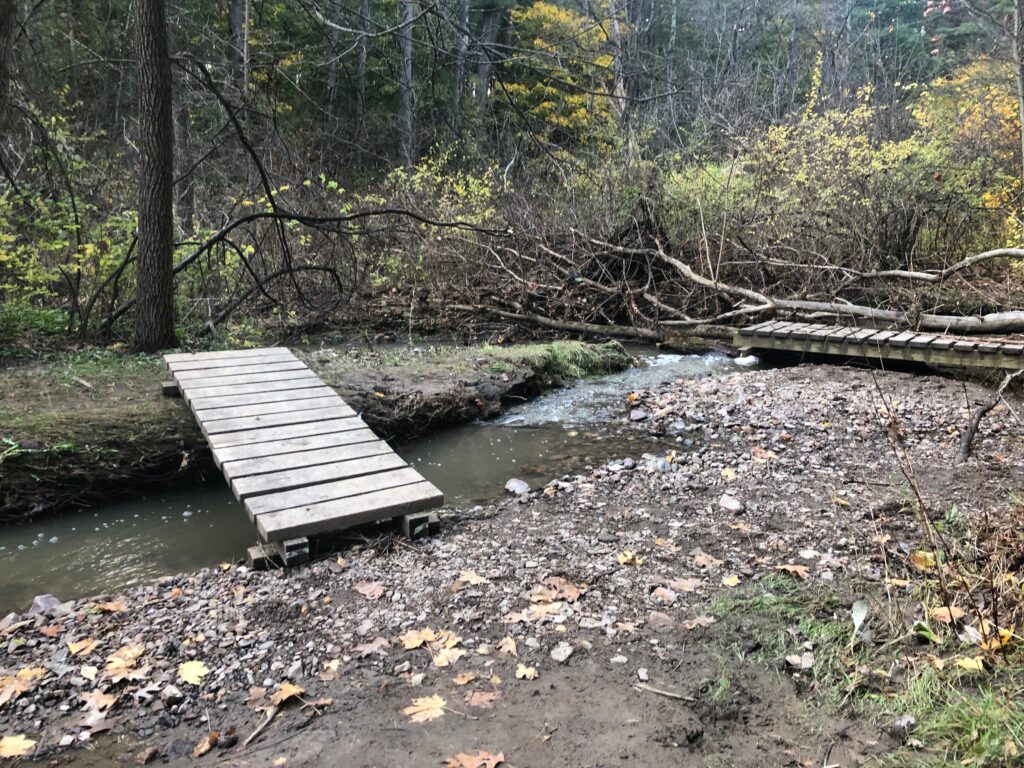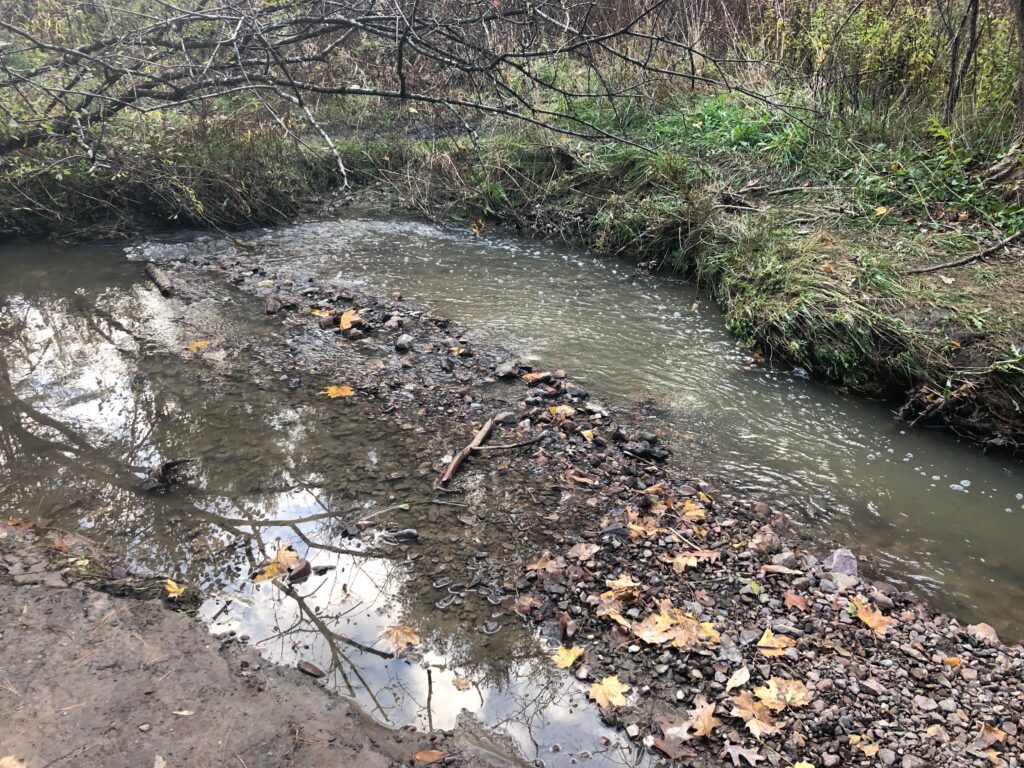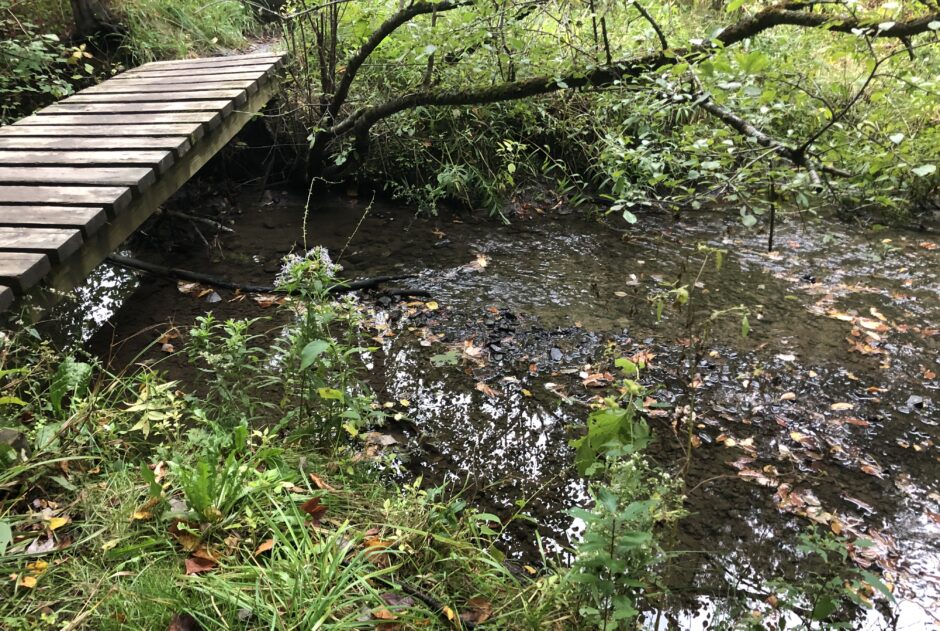
I noticed significant changes at Centennial woods during my trip to the brook today. The night before I visited the brook, there were torrential downpours and flooding across the city of Burlington. Centennial woods collects much of the runoff from the city because it is downhill, so there was significantly higher water levels. The bank of the brook had been eroded a couple feet, creating a vertical drop among the side of the brook. Most of the vegetation was browning or had begun to die off. The majority of the trees had lost their leaves, except the eastern white pine stand of course. The Oaks, Ash’s, and Maples have all lost their leaves to litter among the forest floor.The Red Maples red leaves have fallen, with the exception of a few lingering young trees with their yellow leaves. In the trees, all the cholorphil has broken down, and the presence of green leafs reside in the understory. The wood ferns, blue cohosh, and buckthorn, and various grasses along the brook represent the lingering effects of fluctuating autumn temperatures. Mapping the site based on memory was an interesting test to see what parts of my site were important to me, what I truly remembered. Then going on to the site, I realized much of what I have forgotten, but also the significance of what I did remember. The changes in falling leaves and water levels are the most prominent in my memory, but the detailed report of flora life was exposed through thinking about what species define the brook at this time of year and adding them to my map. Going forward, I think I will look to these key defining species in not only looking at they change through the oncoming winter, but how the health of them changes in general with different weather and land usage patterns.



